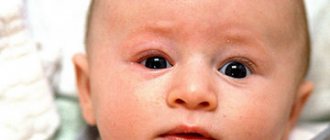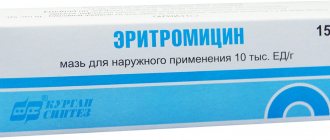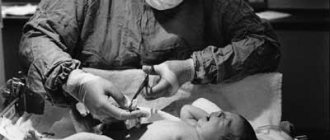Purulent conjunctivitis occurs more often in children than in adults, due to the characteristics of the body and behavior. The disease can be caused by specific and nonspecific flora, which determines the clinical picture. Treatment is carried out by an ophthalmologist.
Causes
Purulent eye damage is caused by various bacterial flora:
- nonspecific - staphylococci, streptococci, Klebsiella, Pseudomonas aeruginosa;
- chlamydia;
- gonococci.
Nonspecific inflammation is more common. The following conditions contribute to the development of the bacterial form of conjunctivitis:
- lack of personal hygiene;
- frequent injury to the conjunctiva;
- decreased immune defense.
Children in organized groups - kindergartens, schools - get sick more often. The source of infection is sick people, animals, and contaminated environmental objects.
Clinical picture
Manifestations of acute purulent conjunctivitis in children depend on the type of bacteria that caused it. Common manifestations include inflammation with the formation of purulent discharge. There is swelling of the eyelids, itching and burning. Signs of intoxication are rarely observed, mainly in newborns or weakened children.
Staphylococcal
The most common type of conjunctivitis. Infection occurs through direct contact with a sick person or animal. It begins acutely, affecting both eyes. The mucous membrane turns red and swells greatly. Copious purulent discharge appears. They dry out on the eyelids after sleep, the child cannot open his eyes.
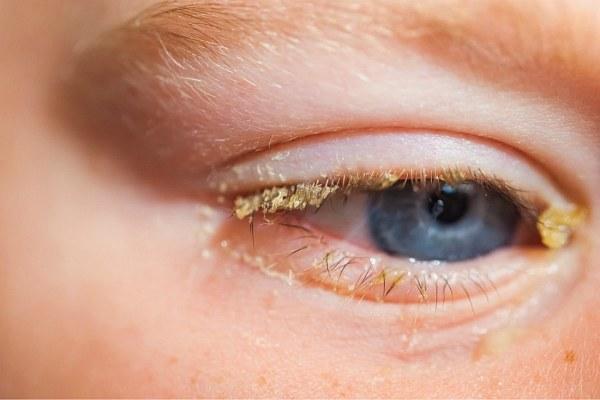
Pseudomonas
The cause is Pseudomonas aeruginosa, infection occurs through the use of contaminated contact lenses and non-sterile eye drops. Both eyes are affected. Characterized by severe swelling of the eyelids, the conjunctiva is red and loose. The purulent discharge is not profuse, blue-green in color.
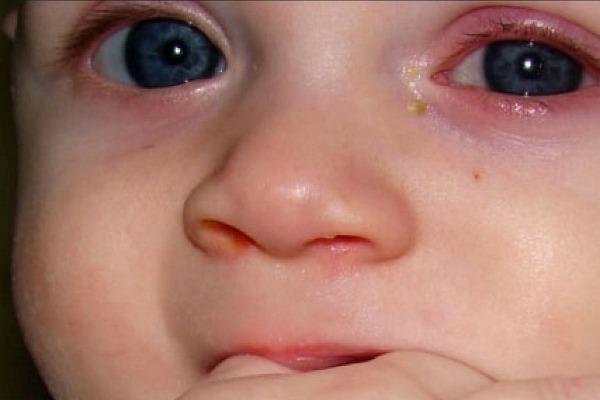
Gonococcal
Conjunctivitis occurs in newborns if the mother suffered from acute gonorrhea during childbirth. The disease develops three days after birth. Both eyes are affected. First, pronounced swelling appears, the eyelids thicken and turn red. The conjunctiva is hyperemic and loose.
Then the swelling subsides and the eyelid becomes soft. A large amount of purulent discharge is formed, which is yellow in color. The discharge is viscous and creamy. During the recovery period, the conjunctiva becomes rough.
Older children may get sick. Infection occurs through household contact from a person with gonorrhea. Conjunctivitis occurs in the same way as in newborns.
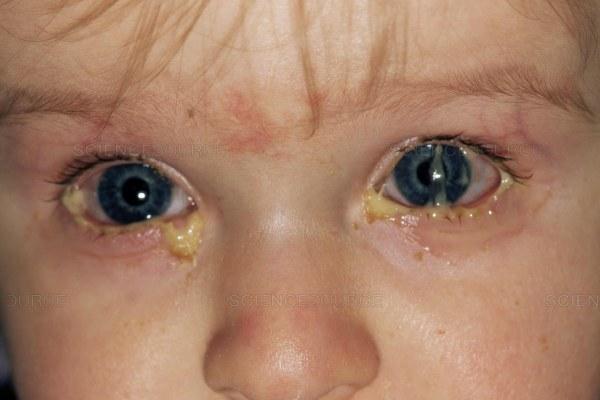
Chlamydial
Caused by chlamydia, you can become infected from a sick person. Characterized by a chronic course. The mucous membrane acquires a cherry-purple color, and roughness forms on its surface. Then ulcers form, purulent discharge.
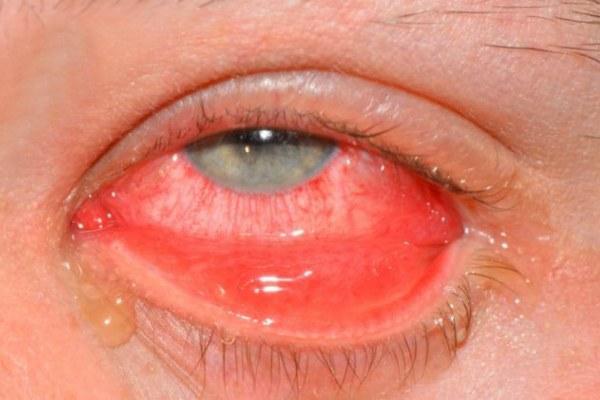
Epidemic
Caused by the Koch-Wicks bacterium, which is spread on the legs of flies. Infection occurs through contact. The onset of the disease is severe swelling and hyperemia of the conjunctiva. On the second day, a lot of purulent discharge appears, sticking the eyelids together. General symptoms develop - malaise, headache, fever.
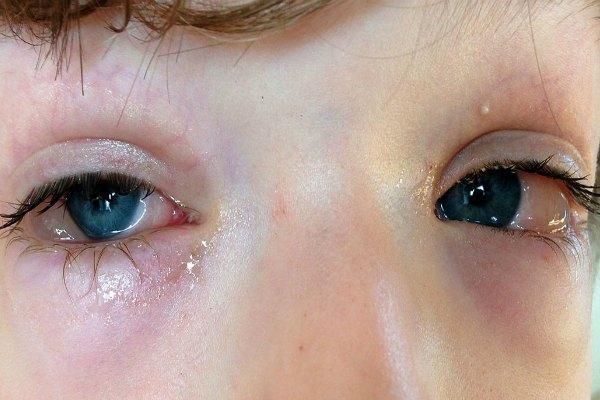
What are the most effective drops for conjunctivitis for children?
0
Conjunctivitis is a disease in which the inflammatory process affects the eye area and eyelids. It is most often diagnosed in children, and curing it is not difficult. To do this, you need to show the baby to the doctor so that the ophthalmologist, based on the existing symptoms and the cause of conjunctivitis, can prescribe effective drops.
Application area
Before determining effective drops for conjunctivitis for children, it is necessary to accurately establish the diagnosis. Today, 3 forms of conjunctivitis are known:
- Bacterial. Its development can be affected by pathogenic bacteria that penetrate the mucous membrane of the eye if hygiene rules are not followed. Very often, the baby first plays with toys, and then involuntarily rubs his eyes, as a result of which all the pathogenic microflora penetrates the tissues of the visual organ and begins to actively multiply. The bacterial form of conjunctivitis can be recognized by symptoms such as yellow discharge from the eyes. They have a viscous consistency and because of this, the eyelashes stick together, there is a burning sensation and a sensation of a foreign object in the eye.

- Viral. The inflammatory process is formed as a result of the influence of various types of viruses. Viral conjunctivitis can occur against the background of colds. Most often, the disease affects preschool children. The inflammatory process primarily affects one organ of vision. Liquid and transparent discharge is observed. The baby has a burning sensation, itching, and tearing. At the same time, the eyelashes do not stick together.
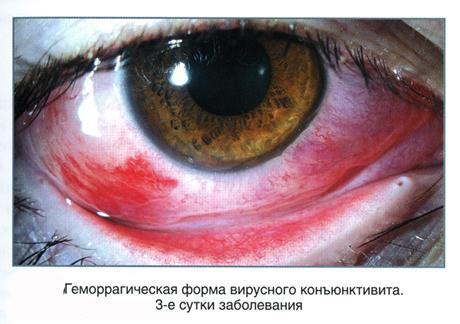
- Allergic. This pathological process is formed due to the penetration of a certain irritant into the child’s brain. This includes plant pollen, pet hair, and household chemicals. This type of conjunctivitis often leads to the development of allergic rhinitis and bronchial asthma. Pathology can be recognized by swelling, which affects the eyelids and mucous membranes. The child also complains of itching. Allergic conjunctivitis affects two organs of vision.
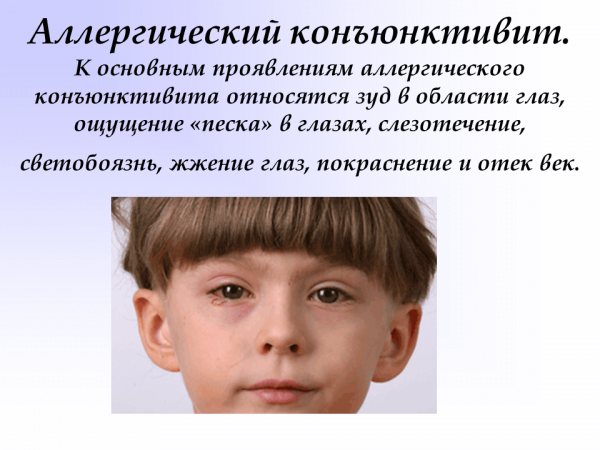
Features of the drugs
Once the doctor makes a diagnosis, he will be able to prescribe medications to treat one or another form of conjunctivitis in children. It is the drops that are most often prescribed for the treatment of this disease. Thanks to them, all useful components are evenly distributed over the surface of the mucous membrane, quickly stop inflammation, and soothe irritated mucous membranes. Drops are intended for topical use. Depending on the type of conjunctivitis, they may contain antibiotics, antiviral components and antihistamines.

List of drugs
With a viral
The specificity of these drugs is due to the uniqueness of the infecting microorganism. Firstly, a viral cell is 50 times smaller than a bacterial one, and secondly, it contains nucleic acids - self-reproducing compounds that can integrate into the cells of another organism for the purpose of further reproduction. It is precisely because of their size and unique properties that the human body does not have the necessary protective reaction.
Flu vaccination is aimed at creating immune protection in the body of a child and an adult against several strains of viruses. The annual update of vaccines is due to the rapid mutation of viruses.
Interferon
The active components of the drug effectively eliminate viruses and also create reliable eye protection. The drug is presented in the form of a powder, which must be diluted with water in the proportion specified in the instructions. Store the prepared solution for no longer than 2 days. You cannot use drops for a long time, otherwise the opposite effect will occur.
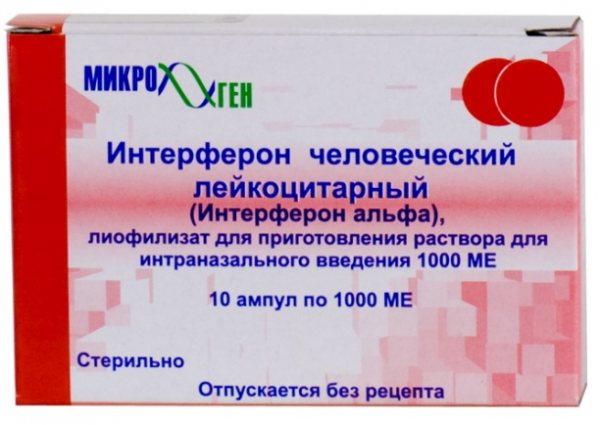
Antiviral drug "Interferon"
Oftalmoferon
This drug can be used to treat viral conjunctivitis, allergy symptoms and to strengthen the body's defenses. Drops effectively cope with symptoms such as swelling, redness and itching. This is important, because with conjunctivitis the baby scratches its eyes all the time, which can lead to additional infection.
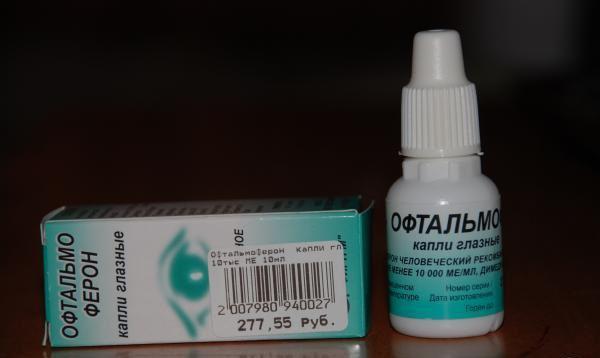
Ophthalmoferon is a complex ophthalmic drug with antiviral action, indicated for topical use.
The drug must be used until symptoms disappear completely.
The medicine has no side effects, but after opening the package, store the drops for no longer than a month.
Florenal
This drug has a high therapeutic effect in the treatment of viral conjunctivitis. Children are prescribed a 0.1% solution. Use 1 drop 3 times a day. Side effects are kept to a minimum, only rarely does a burning sensation occur after instillation.
Tebrofen
This drug should be used to combat the herpes virus in children. It has a quick effect. Drip 1 drop 2-3 times a day. After instillation, a slight burning sensation may be present.
Oftan I'm coming
The medicine effectively eliminates superficial conjunctivitis of viral origin that occurs against the background of the herpes virus. The drug is extremely effective, but it has contraindications. Its components can cause the development of allergies, itching, burning in the eyes. Drops should not be used by children under 2 years of age.
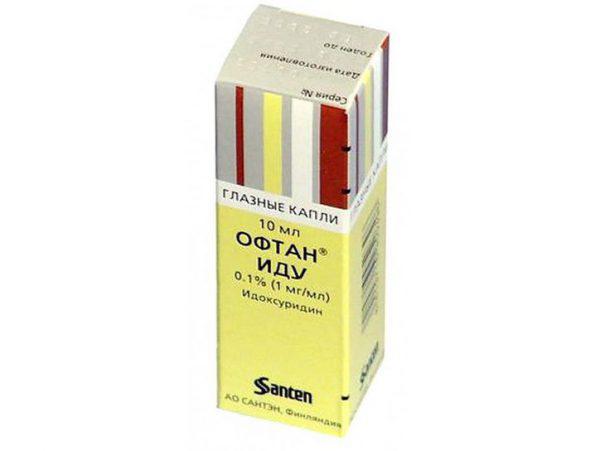
Antiviral drug for topical use in ophthalmology
Aktipol
This drug is famous for its antiviral, immunomodulatory and antioxidant effects. Drip 1 drop 2-3 times a day. Very rarely, after such treatment, allergies and redness occur.
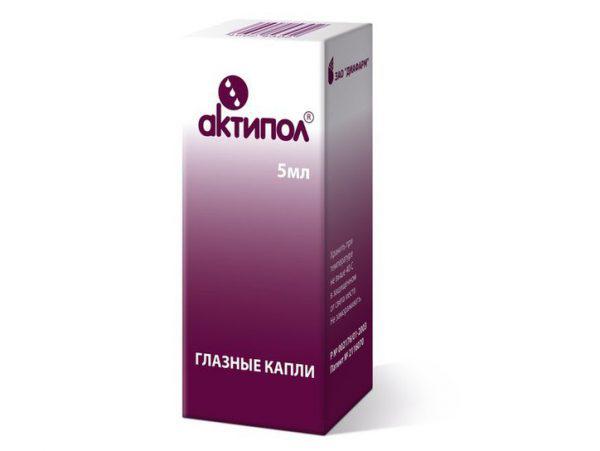
Actipol has antiviral, immunomodulatory and antioxidant effects
The duration of the therapeutic course is determined by the doctor.
Dexamethasone
This drug is characterized by a rapid effect on inflammatory areas, providing an antiviral effect. You can stop the inflammatory process with these drops in a short period of time.
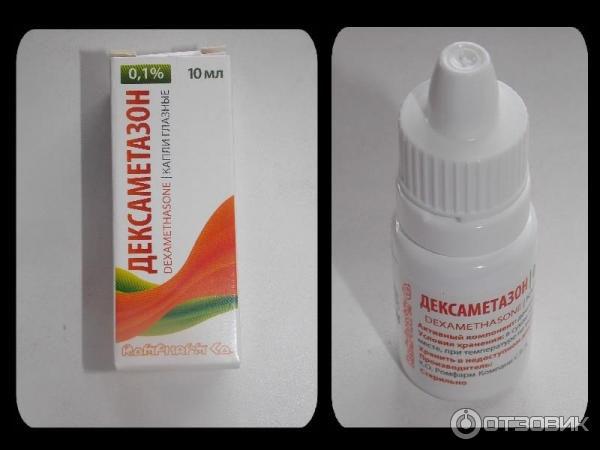
Dexamethasone glucocorticosteroid (GCS) for topical use in ophthalmology
Dexamethasone can be used for no longer than 14 days.
For bacterial
Antibiotics are drugs used locally or systemically to suppress pathogenic microflora that lead to a disruption of the body's immune defense. There are natural antibacterial agents and synthetic ones. Natural ones are most often used in complex folk medicine, synthetic ones have priority in any treatment and are prescribed directly by the attending physician.
Albucid
This drug should be considered one of the most effective in the treatment of bacterial conjunctivitis. It is characterized by a wide range of influence. Children's eye drops can be used from 1 year of age. Albucid is also used to treat runny nose. The disadvantages of the drug include a burning sensation, itching and redness.
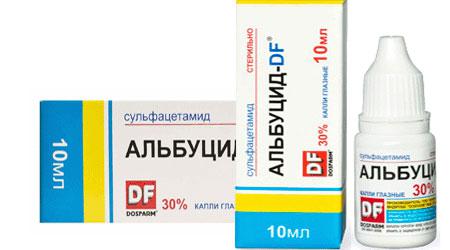
Fucithalmic
This drug is also effective against many bacteria. Can be used by children at any age. The only contraindication is hypersensitivity to the components.
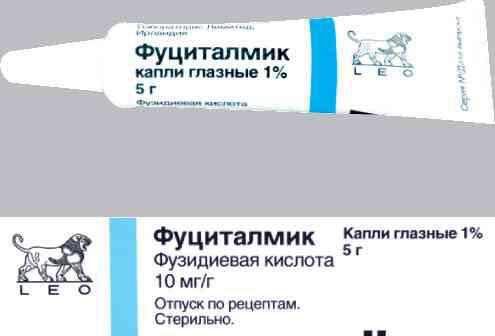
Fucithalmic is an antimicrobial drug that belongs to the fusidine group and has a polycyclic structure.
If after 7 days of therapy no positive dynamics can be seen, then you need to choose another drug.
Ciprofloxacin
The medicine has a wide range of effects. Can be used by children after 1 year. Use 1 drop 2 times a day. The duration of treatment should not exceed 7 days.
A working method to restore vision! You will throw your glasses in the trash in just 3 days...
Restoring vision. Real life story.
Has a wide spectrum of action. After using the drops there is no burning sensation, although people with increased intolerance to the components should not use the medicine. Prescribed for conjunctivitis in a child aged 2 years or more.
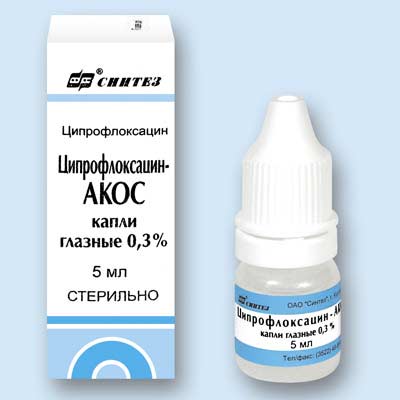
It is allowed to use Ciprofloxacin Akos drops for the prevention of infectious complications in conjunctivitis
Phloxal
The main component is ofloxacin. It has a powerful antibacterial effect. There is no irritation when using drops. According to the instructions, Floxal eye drops can be used to treat bacterial conjunctivitis in children of all ages, even infants. After opening the bottle, the drops can be stored for no longer than 1.5 months. Levomycytin drops for children have similar indications.
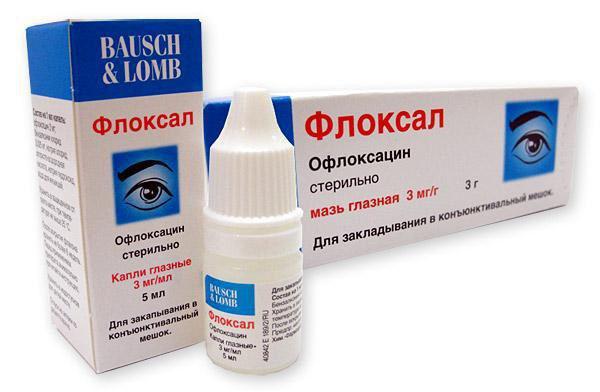
Floxal is an antibacterial agent that is used as local therapy during ophthalmic diseases
Tobrex
Tobramycin acts as the main main component. Its action is aimed at stopping various bacteria, including streptococci and staphylococci. The drug does not cause eye irritation. Can be used to treat bacterial conjunctivitis in children of all ages. It is extremely rare that an allergy may occur.

Torbex is a modern local antibiotic.
Vitabact
This drug has a wide spectrum of action and belongs to combination drugs. The product effectively copes not only with bacteria, but also with some viruses and fungi. According to the instructions for children, Vitabact eye drops are used for no more than 10 days. Contraindicated in case of hypersensitivity to the components.
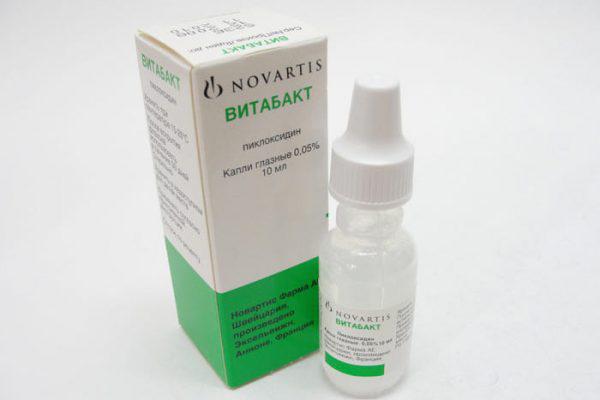
Vitabact eye drops against eye infections - quickly and effectively
For allergic
If a child has an eye reaction to an external irritant, then we are talking about allergic conjunctivitis. It can occur as a reaction to plant pollen, the smell of household chemicals, or pet hair. When prescribing drops for the treatment of allergic rhinitis, it is necessary that they contain antihistamines.
Remarkably, an allergic reaction to animals does not occur due to excessive amounts of fur, but due to enzymes contained in the animal's saliva, which they use to coat their fur. Therefore, people with obvious signs of allergies to cats may not have the same reaction to dogs and other pets.
Azelastine
This drug quickly and effectively combats allergy symptoms. Within 10-15 minutes a positive result occurs. This effect lasts for 12 hours. The peculiarity of the drug is that its active components do not linger in the blood. Cannot be used by children under 4 years of age.
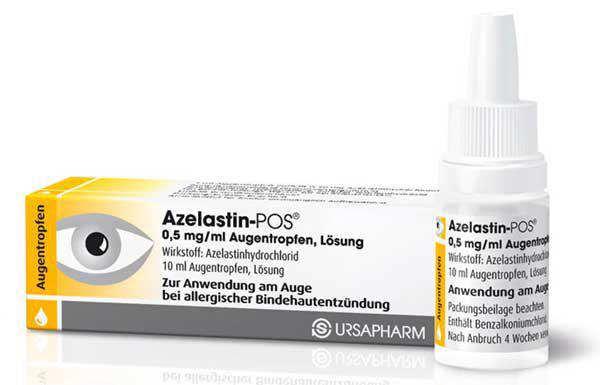
Azelastine is a phthalazinone derivative, which in turn has antiallergic, membrane-stabilizing and antihistamine effects.
Allergodil
The action of this medication is aimed at stopping an allergic reaction that affects the organs of vision.
Can be used in combination with other medications, but 15 minutes should pass between treatments.
The active components of the drug are well tolerated, and side effects are minimized. The medicine is not prescribed for children under 4 years of age.
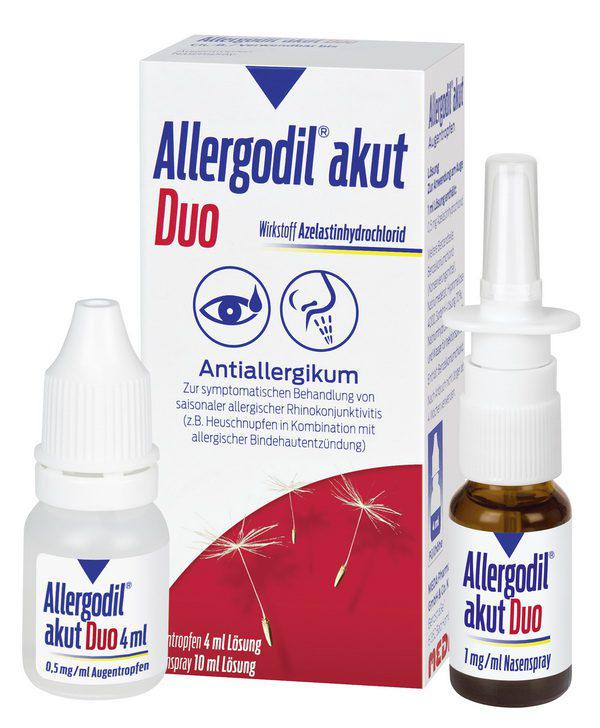
Allergodil relieves allergic reactions
Lakrisifi
This drug has a powerful antiallergic effect. But its components can linger in the blood, resulting in some side effects. The medicine should not be used for a long time.

A preparation for moisturizing and protecting the cornea.
Recommendations for use
To ensure that the treatment used is as effective as possible, the following recommendations must be followed:
- Before the procedure, wash your hands thoroughly with soap.
- Using a sterile cotton pad or cotton swab, remove any crusts and discharge from the eyelashes.
- Lay the child down and tilt his head back a little.
- Place drops into the conjunctival sac and ask the child to lie down for 10 minutes.
- Carry out such activities 2-3 times a day, depending on the doctor’s prescriptions.
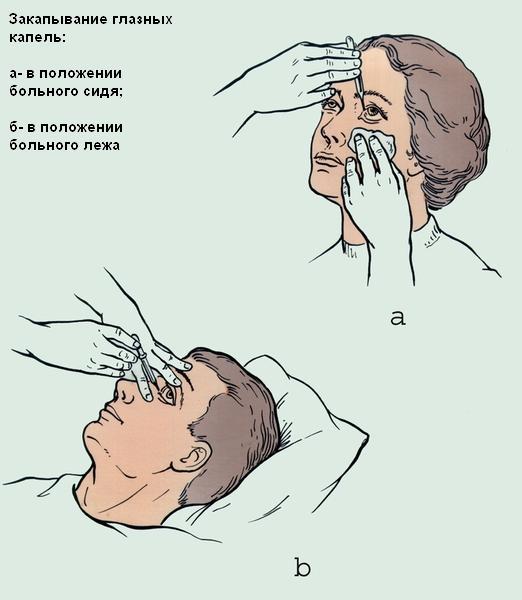
Video
conclusions
Conjunctivitis in a child is a common pathological process, which, in addition to unpleasant symptoms, without proper treatment will lead to complications. To treat the disease, eye drops or conjunctivitis ointment for children are prescribed, based on what caused the disease.
Treatment methods
After determining the cause of purulent conjunctivitis in children, the doctor begins treatment. It consists of using antibacterial eye drops and ointments.
- Sulfacyl sodium, or “Albucid”. A widely used drug used for purulent inflammation. It is used as a means of preventing gonoblennorrhea in newborns. Immediately after birth, a drop is instilled into each eye. “Albucid” is used to treat nonspecific conjunctivitis caused by staphylococci or streptococci.
- Fluoroquinolones - “Oftaquix”, “Uniflox”. Drops are effective for the treatment of gonococcal, pseudomonas, and chlamydial conjunctivitis. Their treatment lasts for at least two weeks.
- Ointments are used to treat chlamydial purulent conjunctivitis in children. The most effective are tetracycline and erythromycin ointments. Apply them to the mucous membrane every 5 hours. They are also used to treat epidemic inflammation.
To eliminate swelling and lacrimation, antihistamines are used - Claritin, Erius. They are given to children in the form of syrups.
Additionally, purulent conjunctivitis in children can be treated using folk remedies. They are used for washing, compresses, lotions. The following medicinal plants help effectively:
- chamomile flowers;
- sage;
- St. John's wort;
- Oak bark.
Decoctions and infusions are prepared from plants. Rinsing is best done before instilling drops or applying ointments. For young children, the eyes are washed with a pipette or gauze swab.
Older children can perform this procedure independently. You need to pour the broth into a wide container. The child leans over the container so that his face is lowered into the liquid. He then blinks several times to flush out all the pus.
Lotions and compresses are applied before bedtime. Moisten a gauze cloth with the decoction and apply it to closed eyelids for 10-15 minutes.
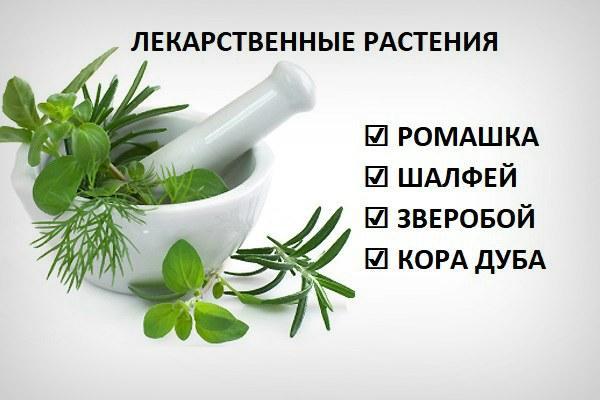
Treatment of conjunctivitis in newborns
Any changes in the baby’s condition are a reason to seek qualified help from a doctor. Conjunctivitis in children, although a common ailment, and any pharmacy will provide you with a lot of recommendations and make prescriptions, still requires a mandatory examination by an ophthalmologist. Only he, after a detailed examination and laboratory tests of a smear secreted from the eyes, can prescribe effective therapy. Self-medication is strictly prohibited. The drops must be appropriate for the child’s age and act on a specific pathogen. Remember that incorrect actions can significantly worsen the condition and lead to changes in the microflora of the eyes, causing inflammation of the entire eyeball.
The choice of treatment for conjunctivitis depends on its type (bacterial, viral, fungal or allergic).
Therapy consists of regular eye drops, up to seven times a day, and the use of special ointments. It is also very important to carry out regular hygiene procedures, both before instillation and at other times. They consist of cleansing the eyes from discharge from the conjunctival cavity.
Now about the instillation technique itself. The process is not complicated, and small children tolerate it well. Remember that all manipulations must be carried out with clean hands, which should be washed immediately before using eye drops. This is done as follows:
- the child is in a horizontal position;
- the lower eyelid is carefully moved back and the drug is dripped;
- The eye is carefully blotted with a cotton pad (individually for each eye).
It happens that the doctor prescribes the use of several types of drops at once, then they are instilled sequentially.
Applying eye ointment has the same technique. The medicine is carefully placed under the lower eyelid.
The main thing is to strictly follow the doctor’s recommendations. Remember that all medications must be stored correctly. Open eye drops and ointments should not be used for more than three weeks.
Complications and prognosis
Purulent conjunctivitis in a child with untimely diagnosis and inadequate treatment leads to the development of complications:
- the most common is keratitis - the spread of inflammation to the cornea;
- transition of acute inflammation to chronic form;
- turning of the eyelids;
- ingrown eyelashes.
Most cases of the disease end favorably, with complete restoration of visual function. Chronic forms of the disease occur with gradual impairment of visual function.
Treating bacterial conjunctivitis
The most common form of conjunctivitis. Both the baby and the parents can spread pathogenic bacteria to the eye membrane.
When children are actively exploring the surrounding space, it is difficult to keep track of the child’s clean hands. By touching everything, the baby collects a lot of bacteria on his fingers, and then can, for example, rub his eyes and “deliver” pathogenic microorganisms to the mucous membrane.
Parents may unknowingly not follow the rules of hygiene and dry the child with one towel after washing and after washing, spreading bacteria from the excretory organs throughout the body.
Bacterial conjunctivitis can be recognized by the following symptoms:
- Pain in the child's eye. (The child rubs his eyes, there is a sensation of a foreign object in the eye);
- Yellow crusts appear on the eyelids;
- Pus/lacrimation discharge from the eye (gray or yellow in color, cloudy and viscous in appearance, most often noticeable after sleep);
- Sticky eyelids.
A newborn baby does not yet have tears, so if any discharge from the eyes appears, it may be a sign of the development of conjunctivitis, which means you need to consult a doctor.
Fucithalmic drops
The drug is used conjunctivally, that is, instilled into the conjunctival sac of the eye. Directions for use: 1 drop twice a day for a week. If it does not help within 7 days, you need to reconsider the treatment.
An open bottle can be stored for no longer than a month.
The average price of Fucithalmic drops in pharmacies is 350 rubles.
Prevention measures
To protect children from the development of purulent conjunctivitis, it is necessary to observe preventive measures:
- teaching children the rules of personal hygiene - thorough washing of hands and face, avoiding contact with dirty objects, using only personal handkerchiefs;
- maintaining strong immunity - hardening, taking vitamins;
- avoiding contact with infectious patients;
- proper use of contact lenses, their careful treatment.
Prevention measures are not complicated, but significantly reduce the incidence among children.
Purulent inflammation of the conjunctiva is common among children. This is facilitated by insufficient adherence to hygiene rules and imperfect immunity. It is important to detect the disease in time and begin its treatment. This makes it easier to avoid complications.
Leave comments on the information you read and share your own experience. Tell your friends about this article using social networks. All the best.
